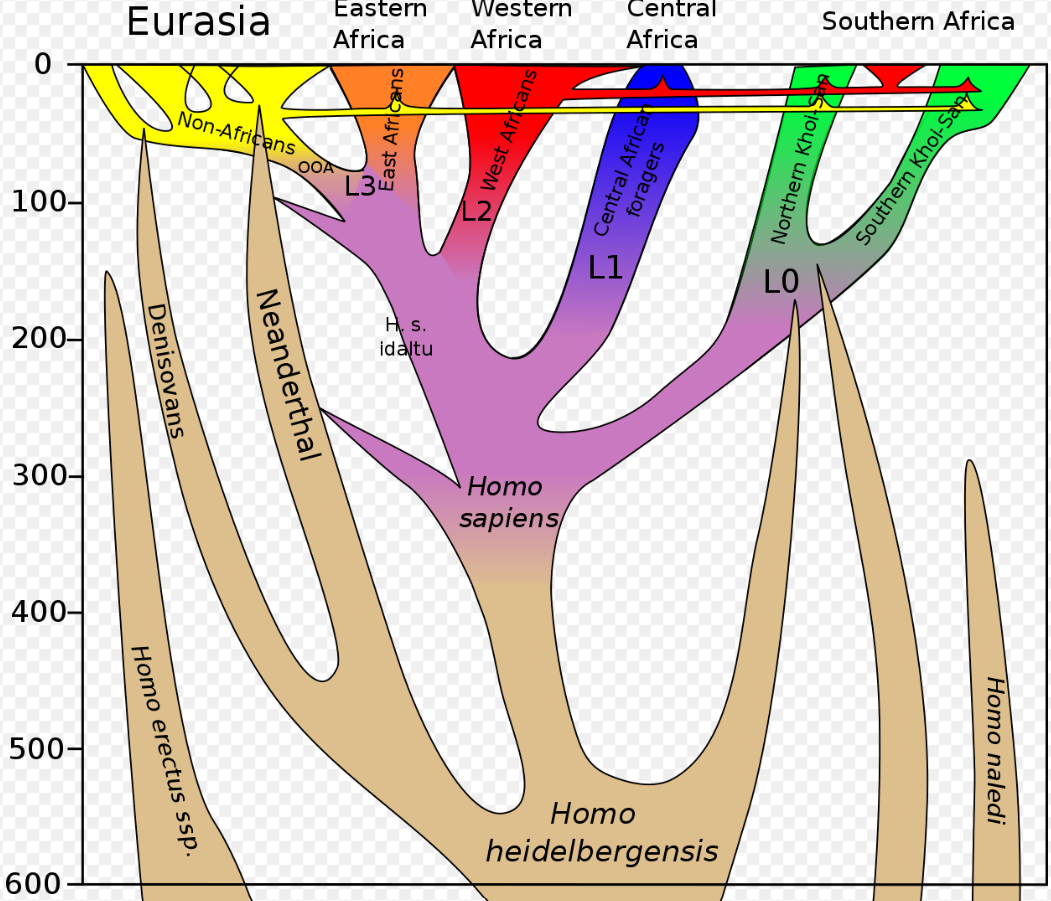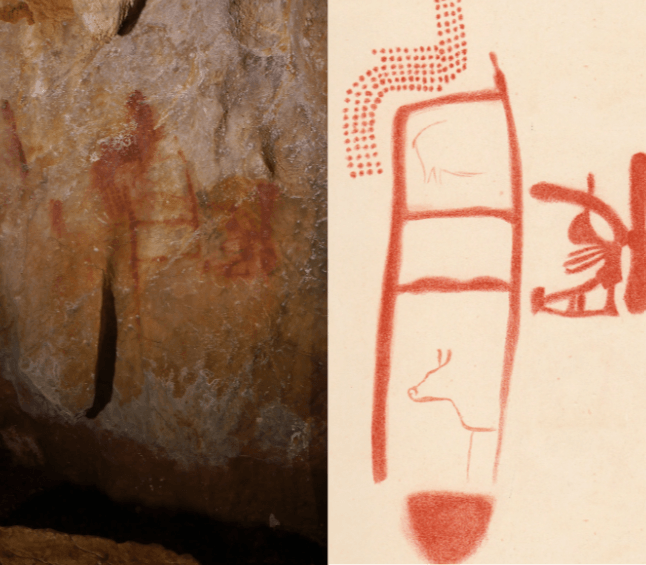Neanderthals

Neanderthals most probably developed from the species called Homo Hiedelbergensis (there are other candidates) around 400 kya. A significant characteristic of Neanderthal evolution is that the species developed in Europe and the near east, never returning to Africa.
Physiology

With a brain taking up about the same volume as a Sapiens, there is no evidence that Neanderthals were any dumber than human beings. The more elongated, pushed over look of the Neanderthal skull is very different to the globular look of the Sapiens and this is thought to have an impact on the layout of the brain (for instance the space available for the frontal lobe, which is found just behind and our eyes and is used for complex conceptual thought) and thereby creating the potential for a different way of thinking.
Comparing what a Neanderthal would look like, to a Sapiens is a bit like comparing a Rugby Prop (heavyset) with a football midfielders (built for distance and speed). These differences would have a impact on things such as their respective hunting strategies with Neanderthals thought to be ambush hunters, whilst Sapiens would either run their prey down (persistence hunting) or use traps.
Genetics

Modern human DNA contains about 19,000 genes, each one is responsible for encoding a protein. The Neanderthal genome when decoded in 2013, was found to be mostly genetically identical, however there were 96 differences identified, each one representing a change the structure of the protein it produces. Amongst these is a gene called TKTL1 which plays an important role in the development of the frontal lobe.
As with all hominins, there was a degree of interbreeding (hybridisation) between different Hominin species, including Sapiens. Because Neanderthals never returned to Africa, evidence of this hybridisation of the DNA can be found in modern Europeans where it represents up to approximately 3% of the Sapiens genome, but is not found amongst the modern African population.
Culture

Both Neanderthals and Sapiens are thought to have used language, conducted death rituals, made fire, fashioned tools and made art. It has been suggested that Sapiens were better able to use art to represent concepts and ideas (see Art), however shown above is an image found in La La Pasiega cave, Spain showing an example of Neanderthal art from about 63 kya. It is far more sophisticated than anything being produced by Sapiens at the time which calls into question any advantage enjoyed by Sapiens in this respect. Yet there was some a crucial, key difference between these two closely related species that allowed Sapiens to thrive whilst about 40 kya the Neanderthal population dwindled to extinction.